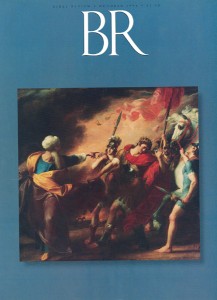The Parable of the Elm and the Vine
Sidebar to: The Shepherd of Hermas
The last and longest section of the document, the parables, or similitudes, contains several stories that illustrate a symbiotic relationship of the rich and poor: The wealthy offer charity to the poor, who then include the rich in their prayers. The stories do not condemn the wealthy, but encourage them to use their money wisely, suggesting that Hermas lived in a well-to-do community:
As I was walking in the country taking notice of an elm and a vine and thinking about them and their fruits, the shepherd appeared to me and said, What are you pondering within yourself regarding the elm and the vine?
I am thinking, sir, I said, that they are well fitted to one another.
These two trees, he said, are a symbol of the servants of God.
I would like to know, I said, the symbol of these of which you speak.
Do you see the elm and the vine? he said.
I see them, sir, I said.
This vine, he said, bears much fruit, but the elm is a barren tree; but this vine, if it does not grow up the elm, cannot bear much fruit lying on the ground, and the fruit it bears, it bears rotten when it does not hang upon the elm. But when the vine is cast upon the elm, it bears fruit both from itself and from the elm. So you see that the elm gives much fruit, no less than the vine, but rather more.
How, sir, is it more? I said.
Because, he said, the vine hanging upon the elm gives fruit that is plentiful and good, but when it lies, on the ground it bears little and rotten fruit. So this parable refers to the servants of God, poor and rich.
How, sir? I said, show me.
Already a library member? Log in here.
Institution user? Log in with your IP address.

